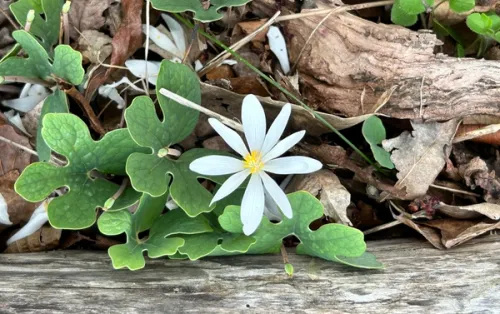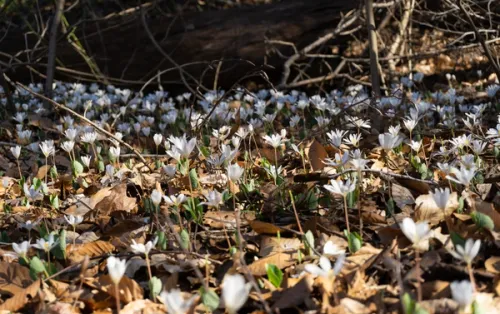Bloodroot
Bloodroot is a perennial wildflower native to North America. It is highly prized for its ephemeral beauty in woodland settings, flowering briefly in early spring before the forest canopy fully leafs out. This plant typically grows only around 6 to 10 inches tall, with each stem bearing a single, large, white flower with multiple petals surrounding a golden center. The flowers appear above the foliage, which consists of a single, round, deeply lobed leaf that wraps around the flower stem at its base. Bloodroot gets its name from the red-orange sap within its stems and roots, traditionally used both as a dye and as a medicine. After flowering, the leaves expand and remain attractive until they die back in late spring to early summer at which point the plant will vanish until the following year.
Details
Range Map
Ecological Benefits
Maintenance Tips
- Prefers moist, well-drained soil; water regularly to maintain consistent soil moisture, especially in dry spring weather.
- Generally requires no pruning. Leaves and stems naturally die back after flowering.
- Thrives in rich, loamy, slightly acidic soil high in organic matter.
- If needed, apply a layer of organic mulch to conserve soil moisture and maintain cool soil temperatures.
- Monitor for slugs and snails, which can damage the foliage. Use environmentally friendly pest control methods as needed.
- As an ephemeral species, this plant will bloom and go dormant before some other species have even started growing. Don't be alarmed if this plant emerges, blooms and vanishes - it should be back next year!





